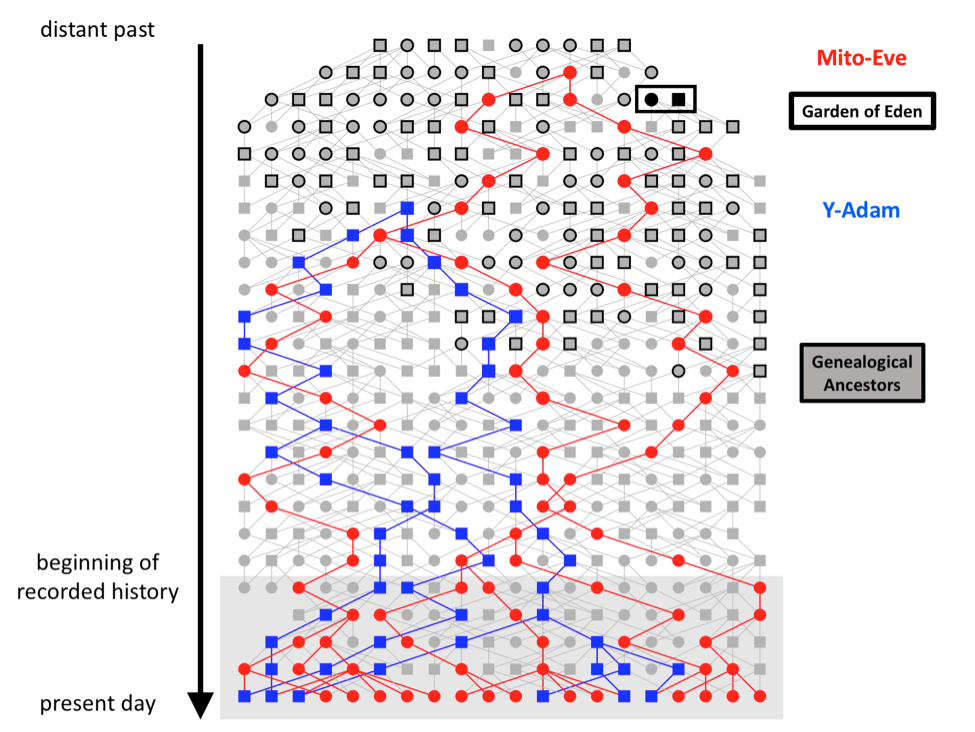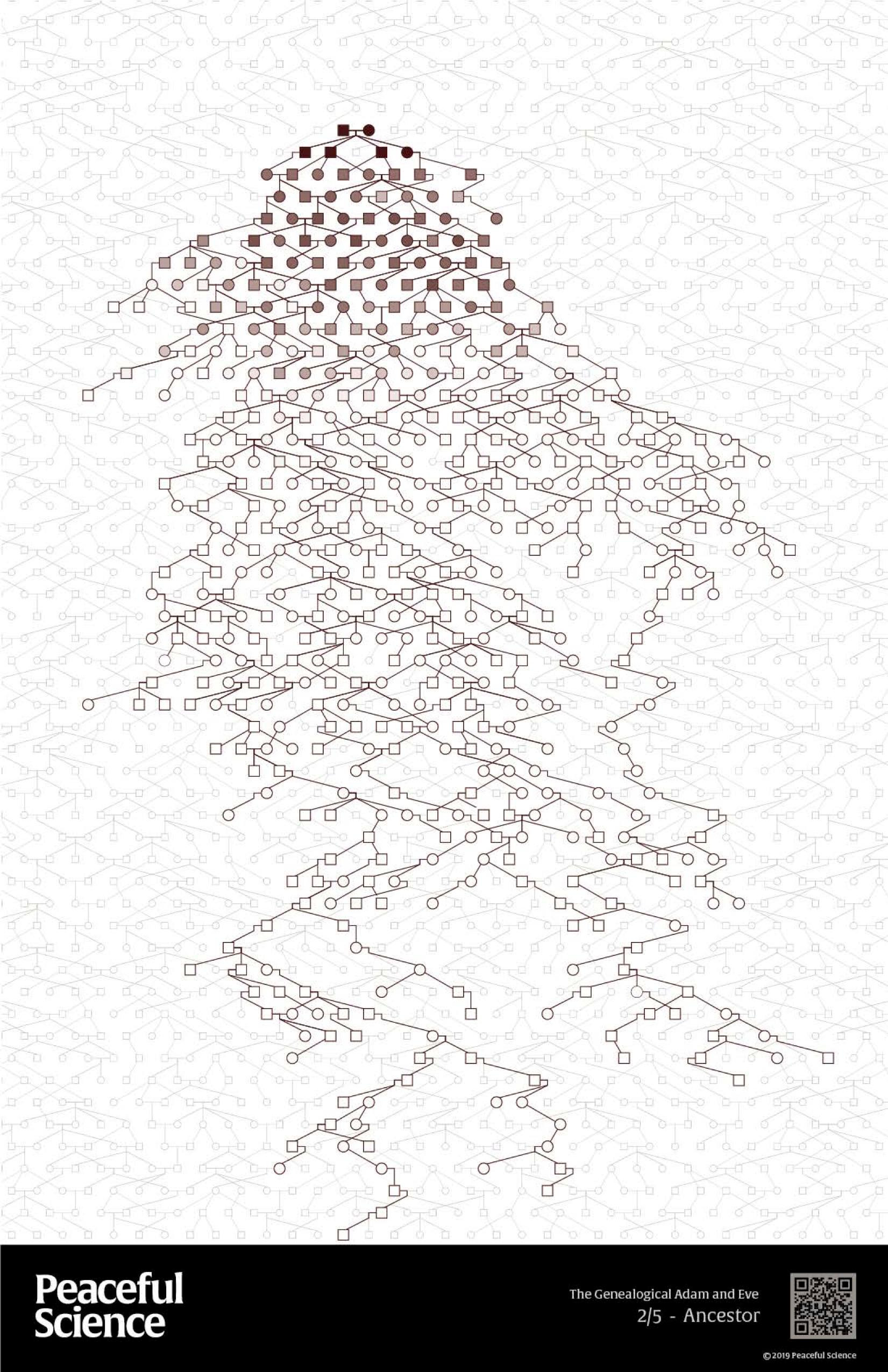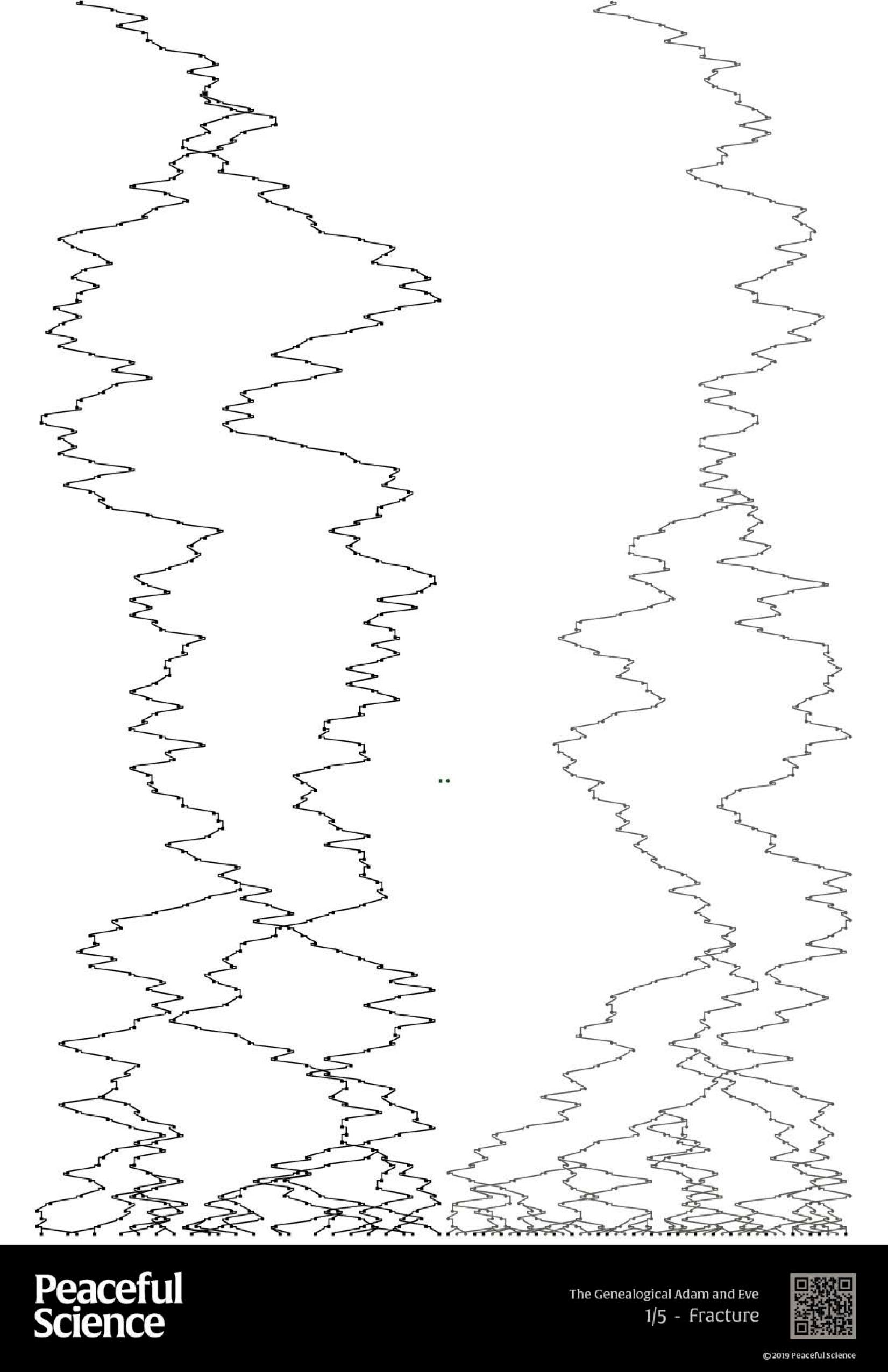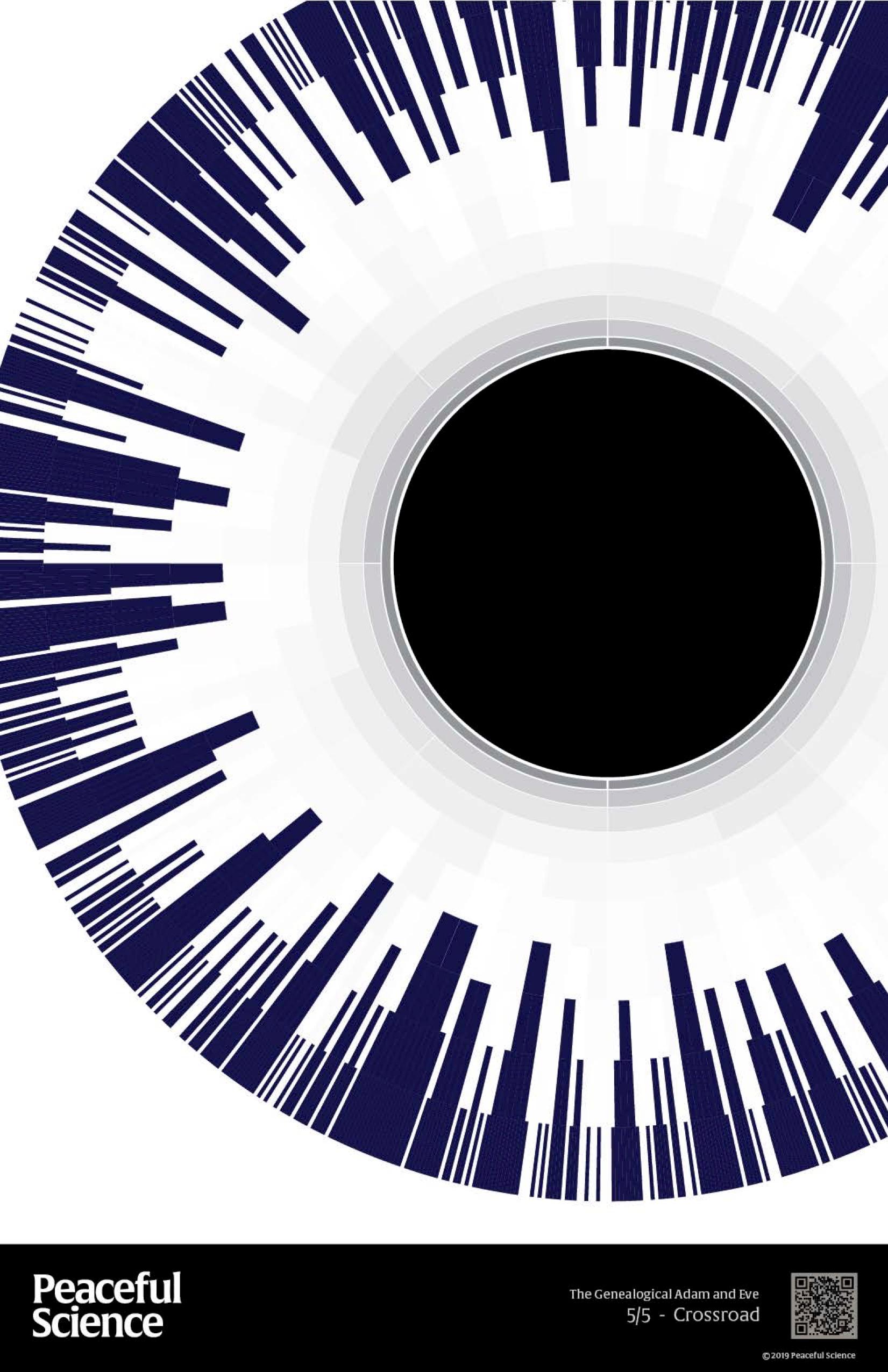The goal of The Genealogical Adam and Eve is to start a new conversation about ancestry. A new conversation about Adam, Eve, race, and evolution. A new conversation about who we are and where we came from.
Many people are reading the book, and the conversation is growing. It is a conversation around science that exposes non-intuitive realities about ancestry. It is a conversation around ancient narratives of origins. Ancestry brings us to questions about kinship, the meaning of race, and extent of scientific knowledge. The conversation is intriguing and multifaceted, but how do we invite others into the conversation with us?
The book is academic. Though it is written for non-experts, many interested in the conversation may never read it. However, art is one way to make the conversation more accessible to a broader audience, to help the conversation grow from here.
Knowing by Seeing
Like many scientists, I am a very visual thinker. Many years ago, I learned about the difference between the genetic ancestry of DNA and genealogical ancestry of individuals. However, I did not really know the difference, not until I could visually see the difference.
It was the summer of 2016, on the beach at Catalina Island. Passing the time away at a conference, I coded a small program to draw random family trees. I overlaid universal genetic common ancestors on the graph, and also universal genealogical ancestors. A computer program easily computed and displayed complex diagrams like this. In seconds, I could make new graphs, seeing a whole range of ways things could come together. Suddenly, I finally knew the difference. I could see the difference, and I knew.

A year later, in the summer of 2017, this diagram anchored the Sapientia article where I first introduced the idea of a genealogical Adam and Eve. In 2018, my article in PSCF was published on genealogical ancestry, with a different figure as the centerpoint (Figure 1 in the article; Figure 4.2 in the book). Reviewers and readers alike reported lingering on this figure, and coming to understand for the first time, to know.
I’m not the first one to go down this path. Similar diagrams were found in David Kwon’s blog post on this subject in 2014. The same is true of Gregg Davidson’s article in 2015, and Graham Coop’s blog posts on ancestry in 2017. Ancestry is a topic where seeing such diagrams may convey to the viewer more than words ever could.
That is the power of images, the meaning of sight.
I found these diagrams of ancestry to be mesmerizing. They made clear the non-intuitive, while also drawing me into the details. Others peered over my shoulder.
Curiosity drew a crowd. On the beach in Catalina, in conference sessions, a group ignored the surf to gather around my computer. A conversation grew. Questions came and answers were formed as images. The inquiry elaborated in interesting ways. Students, theologians, philosophers, and some scientists gathered together. Still we all saw for ourselves something beautiful and surprising, something of who we are and from where we came. In seeing the non-intuitive realities of ancestry, often even missed by biologists, together we knew.
So, in this way, long before I expected to write a book, I wondered often about art and ancestry. Could there be an art of ancestry? Could a conversation grow with images inviting us in to gather around, converse and learn together?
Some people will read a book. Many will not. Could art invite the conversation beyond that of a book?





These five posters depict themes from the five parts of The Genealogical Adam and Eve. They are available as a free download, at reduced resolution, and can also be purchased in our online store. This is just the first phase. We hope more is to come as our community of artists grows.
Playing with the Art of Ancestry
With the book finally published, we are inviting artists to collaborate with us, to explore the meaning of ancestry, in conversation with the science of ancestry.
At long last, we are beginning to play with art. David Rygiol and I collaborated to produce a series of five pieces. Each one is paired with one of the five parts of the book: fracture, ancestor, human, mystery, and crossroads. There are strong connections between each piece and the part it represents.
In time, we may explain the meaning of each piece, but those who read the book should be able to understand on their own. These are conversation pieces though, meant to stimulate questions, and open an opportunity for discussion. We are meant to wonder about them.
These pieces are available in low resolution for free, and we encourage you to share them broadly. Higher resolution prints are available in our shop. Let us know what you think they mean.
This is just a starting point. We are already exploring the next phase. Going forward, the path we take will be decided by artists. We aim to put art and science into dialogue in ways that serve society. If you’d like to join in, come along.
Let us see how we can grow the conversation together.
References
- https://peacefulscience.org/books/genealogical-adam-eve/
- https://henrycenter.tiu.edu/2017/06/a-genealogical-adam-and-eve-in-evolution
- https://asa3.org/ASA/PSCF/2018/PSCF3-18Swamidass.pdf
- http://www.naclhv.com/2014/09/adam-and-eve-were-historical-persons.html
- https://www.asa3.org/ASA/PSCF/2015/PSCF3-15Davidson.pdf
- https://gcbias.org/2017/12/19/1628
- https://peacefulscience.org/pdf/GAE-Posters-11x17.pdf
- http://art.peacefulscience.org
- https://peacefulscience.org/articles/rygiol-science-art/
- https://www.ivpress.com/the-genealogical-adam-and-eve
Jan 13, 2020
Mar 6, 2021
Jul 5, 2025





